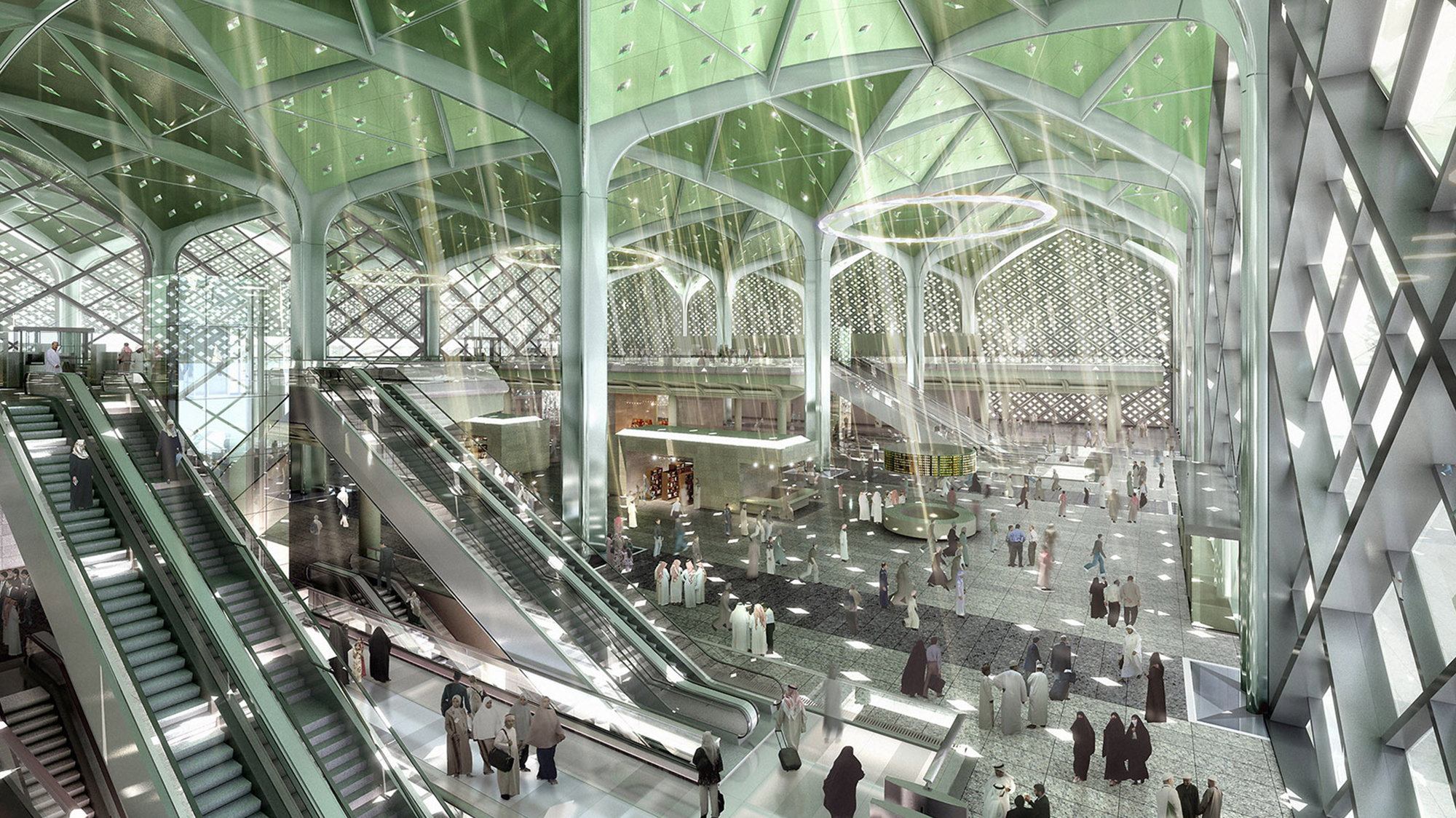Designs by the joint venture (JV) team Foster + Partners and Buro Happold, in collaboration with local architect Dar Al Riyadh, have been revealed for four major new stations along the state-of-the-art Haramain High-speed Railway (HHR), providing a vital new service for the millions of pilgrims travelling between the Holy Cities of Makkah and Madinah during the Haj The HHR is a major new infrastructure project for the Kingdom of Saudi Arabia, connecting the cities of Makkah, Madinah, Jeddah and the developing King Abdullah Economic City (KAEC).
The stations are conceived not only as gateways to their respective cities but also as civic social centres, filled with places to meet, shop, eat and shelter from the sun beneath their rhythmic arched roof canopies. Each station uses the proposed modular design in different ways, with variations in colour, to signify the four cities served while remaining emblematic of the HHR system. Altogether, the large, flexible stations will cover an area more than 30 times the size of Londons Trafalgar Square and will accommodate an anticipated 60 million passengers by 2012 approximately six times the number of passengers that take the Eurostar from St Pancras each year. This is expected to increase to 135 million passengers by 2042.
The two termini and two through stations are designed to provide a comfortable, uplifting experience for passengers. Climate-controlled concourse spaces provide respite from the desert climate. The design concept draws on Islamic architecture and takes the traditional gateway arch form as the basis for its roof design.
The design, common to all stations, features a sequence of 25-metre-high arches rising from the concourse, complemented by smaller 9-metre-high arches at platform level. Supported by freestanding structural trees, repeated on a 27-metre square grid, the arches connect to form a flexible vaulted roof that can be configured to deal with passenger flows from all directions and which can be extended in the future if required.









